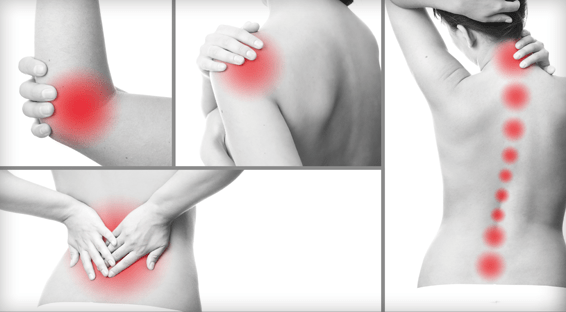New research was presented at AAPM 2015, the annual meeting of the American Academy of Pain Medicine, from March 19 to 22 in National Harbor, MD. The features below highlight some of the studies that emerged from the conference.
Perception of Being a Burden & Suicidality
The Particulars: Few studies have assessed whether the perception of being a burden is associated with suicidality in acute and chronic pain patients.
Data Breakdown: American researchers conducted a study to compare community people without pain, acute pain patients, and chronic pain patients for affirmation of being a burden. Affirmation of the perception of being a burden was used in hierarchical regression models to predict five suicide questions regarding current passive and active suicide ideation, preference for death over disability, current suicide plan, and history of suicide attempts. Patients with chronic pain and those with acute pain were most likely to perceive themselves as being a burden. Affirmation of the perception of being a burden statistically significantly predicted each of the five suicidality questions in both groups of pain patients.
Take Home Pearl: Among patients with either acute or chronic pain, the perception of being a burden appears to be associated with all forms of suicidality.
Psychosocial & Functional Outcomes in Low Back Pain Patients
The Particulars: Patients with chronic low back pain have reported psychosocial and functional impairments as a result of their pain in multiple studies. However, the relationship between these two types of outcomes has not been well defined in this patient population.
Data Breakdown: Patients with chronic low back pain who participated in a study completed anxiety, disability, pain, and depression questionnaires as well as multiple functional measurements. High scores on assessments of anxiety, disability, and pain all correlated with poor performance on functional testing. However, high depression scores did not appear to be related to functional performance.
Take Home Pearl: Among patients with chronic low back pain, functional impairment appears to be associated with anxiety and self-reported feelings of disability.
Successfully Decreasing Opioid Doses
The Particulars: Current guidelines recommended lowering opioid doses appropriately whenever possible in patients with chronic pain. Research suggests that clinicians do not always adhere to these guideline recommendations when managing patients with chronic pain.
Data Breakdown: For a study, researchers tested whether ongoing objective feedback could change prescriber practices. Chart data for patients with chronic pain were compared for the 12 weeks before and after the intervention, which included:
♦ A weekly electronic list of patients on morphine dose equivalents of 200 mg or greater.
♦ Information on whether patients had a formal dose-reduction plan.
♦ Weekly group meetings to review cases of patients taking opioids and establish plans to reduce doses in those receiving higher doses.
After 12 weeks, 8% of patients were kept on 200 mg or greater morphine equivalents, compared with a rate of 13% before the intervention. However, the average daily morphine dose decreased from 280 mg to 246 mg.
Take Home Pearl: An intervention that targets prescriber behaviors using weekly updates and formal opioid tapering plans appears to successfully lower doses of these drugs when used in patients with chronic pain.
Patient Vs Provider Perceptions of OIC Burden
The Particulars: Data are limited on the burden of opioid-induced constipation (OIC) in patients using opioids to manage non-cancer pain. Few studies have also explored the level of discussion between healthcare providers (HCPs) and their patients concerning problems associated with OIC and its impact on pain management.
Data Breakdown: For a study, patients with OIC and their providers were surveyed to capture their perceptions of OIC treatment and non-cancer pain management. At baseline, patient–HCP agreement of constipation presence was about 60%. At 24 weeks, most patients reported dissatisfaction, whereas most HCPs reported moderate or very little satisfaction with how their OIC was managed. Also at 24 weeks, patients more commonly reported little benefit with OIC treatment, whereas HCP reports were divided.
Take Home Pearls: Patients with OIC and their HCPs appear to have disparate perceptions regarding the importance and severity of OIC. This finding likely complicates pain management and suggests that there is a need for clearer patient–HCP communication.
Assessing Point-of-Care Testing for Opioids
The Particulars: Point-of-care testing (POCT) is often used in clinical settings when prescribing controlled substances, but POCT may fail to distinguish between different medications in the same drug class. Mass spectrometry is currently recommended to confirm or refute POCT results. Few studies have assessed whether confirmatory testing yields clinically relevant information beyond POCT.
Data Breakdown: For a study, researchers tested urine drug samples with a positive in-lab screening test for opioids using mass spectrometry. Following mass spectrometry, 86.0% were positive only for the prescribed opioid. Among the remaining samples, 2.7% had only a non-prescribed opioid, 6.2% were positive for both a prescribed and a non-prescribed opioid, and 5.0% were negative for all opioids.
Take Home Pearl: Confirmatory testing with mass spectrometry appears to provide clinically relevant information beyond that which is provided with urine screening tests for opioids.


